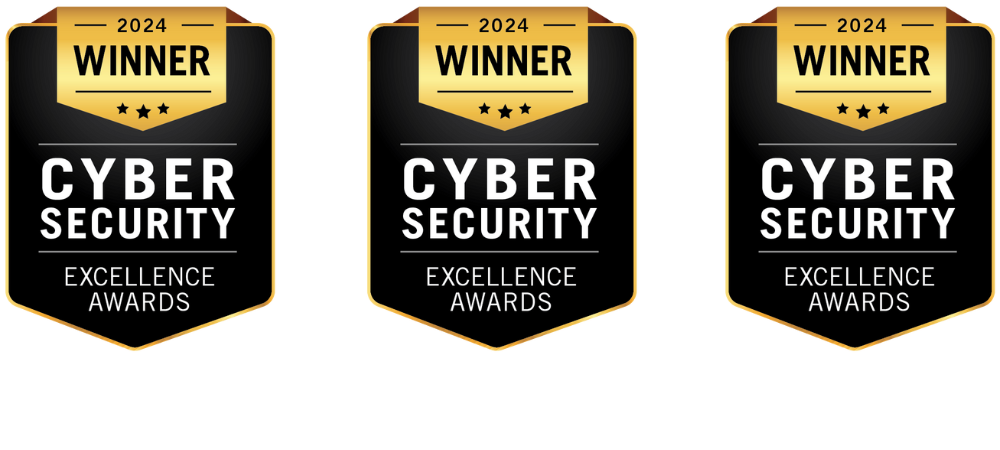We have discovered 10,000 vulnerabilities this year. Great, now what? This sounds like a lot of work has been done, but in reality, it is just noise, not a signal. After every scan, you get a massive list of CVEs, misconfigurations, and alerts but without prioritization and targeted vulnerability fixes, it becomes an overwhelming backlog rather than a meaningful security improvement.
It seems like everything is essential. However, the fact says otherwise – 90% of actual cyber risks come from just 10% of vulnerabilities. Fixing Every Vulnerability Is Wasting Time. Everything else takes bandwidth and fills the inbox. This “alert overload” creates real problems:
- The security team burns out.
- Developers have no clear idea what to fix first.
- Critical vulnerabilities fall through the cracks.
So let’s be clear: showing more vulnerabilities isn’t progress. Fixing the right ones is.
Why Fixing Every Vulnerability Is Wasting Time in the Fix Everything Approach
Fixing everything sounds like a great idea, but it is neither realistic nor correct. Here’s why:
Volume ≠ Value
Fixing more vulnerabilities doesn’t mean you’re secure. Let’s take two scenarios:
Scenario 1
You found a SQL injection in your internal dev environment
CVSS score: 9.8
Severity: Critical
Actual exposure: Zero (no internet access, no sensitive data)
Scenario 2
Your customer login page has an open direct vulnerability
CVSS score: 5.4
Severity: Medium
Actual exposure: High (internet facing, phishing potential, brand risk)
If you prioritize based on the CVSS score, then
- You’ll patch scenario 1 immediately
- And keep scenario 2 in the backlog
But the attackers don’t care about CVSS, they care about entry points.
Volume of vulnerability ≠ volume of risk
More vulnerabilities don’t mean more danger. It often means
- Repeated issues across the environment
- Low-risk legacy systems have a negligible impact
- Scanner noise (especially SAST, DAST, infra scans, etc.)
And all these create an illusion that we are getting secured. However, the fact is – only 10% of vulnerabilities lead to actual risk exposure. The remaining 90% are only utilizing resources and not giving ROI.
So What’s the Fallout?
- Dev teams get unnecessary overload
- Security MTTR increases
- And the board asks – “you have patched thousands of vulnerabilities, then how did the breach happen?”
That’s why volume ≠ value.
Closing tickets is not the job of security. It is identifying the vulnerabilities that can take your whole system down and fixing those first.
The Cost of Fixing the Wrong Things
“Let’s fix every vulnerability.”
Sounds good on paper. Feels like a responsible move.
But here’s the truth nobody wants to say out loud: fixing everything is a trap.
A trap that eats your time, drains your budget, burns out your team, and still leaves real risk sitting untouched.
Let’s unpack the real cost of doing too much.
Your team is drowning before they even start
It’s not the scanner that’s the problem, it’s the avalanche of alerts that follow.
Most security teams aren’t struggling with detection. They’re struggling with triage.
According to data from Strobes, the average analyst spends over 600 hours a year just on Vulnerability Prioritization, sorting, filtering, tagging, and rerouting. That’s 15 full workweeks lost to deciding what to fix first.
Imagine hiring an expensive engineer and using them as a glorified filter. Now multiply that across your team.
And worse? The clock’s still ticking on real threats while they’re stuck deciding what to patch first.
You’re lighting money on fire
Let’s talk about waste.
You’ve got teams patching minor issues in test environments while your production workloads are running vulnerable containers. Or worse, your customer data is exposed in a misconfigured S3 bucket.
And it’s all because someone saw a CVSS 9.0 in the scan. But CVSS isn’t a risk. It’s just a score. In fact, 90% of real-world risk comes from just 10% of vulnerabilities.
And most orgs? They’re spending 90% of their time on the other 90%, the noise.
So yes, you might be “closing tickets” fast.
But if they don’t move the needle on actual risk, you’re just creating a false sense of security and a real budget problem.
Critical threats get buried
Let’s make it real.
One enterprise e-commerce company we worked with had over 55,000 vulnerabilities on their radar.
Before Strobes, they took 15 days on average to patch a critical issue.
Why? Because everything was urgent. So nothing got treated like an emergency.
Then they rolled out CTEM. Centralized their scanners. Layered in a business context, asset criticality, and exploitability.
Result?
- Critical patch time dropped to 5 days
- Same team
- No extra budget
- Just better prioritizationCTEM
That’s the power of fixing the right things.
Your team is chasing ghosts
Let’s talk about morale.
Security people want to solve real problems, not chase false alarms all day. Before implementing context-aware triage, that same e-commerce company had a 45% false positive rate.
Almost half of what they were fixing wasn’t even real.
Then they switched to Strobes’ deduplication and contextual scoring. That number dropped to 8%.
And everything changed:
- Engineers had time to dig into real threats
- Developers weren’t forced to fix phantom bugs
- The team stopped reacting and started thinking
That’s how you turn security from a stress machine into a strategic engine.
You’re not reducing the risk you’re just staying busy
You could close 1,000 tickets this week and still leave your most exploitable vulnerability wide open. Because security isn’t about volume, it’s about context.
It’s about knowing which vulnerability is sitting on a crown-jewel asset, exposed to the internet, tied to an exploit kit, and which one is sitting quietly on a dev box, behind three layers of internal controls.

Risk = Exploitability × Business Impact × Exposure
If your vulnerability prioritization model doesn’t account for that formula?
You’re not doing risk management. You’re doing compliance theatre.
And attackers don’t care about your ticket count.
Real security starts with fixing less
The smartest teams today aren’t patching more. They’re patching smarter. They’re using real-world signals, exploit intel, asset value, and business logic to decide where to act.
They’re eliminating noise with AI, automating workflows, and putting their best people on the vulns that could break the business.
That’s how you go from “busy” to secure.
So the next time someone says, “Let’s fix everything,” just ask: “Or… do we finally fix what matters?”
Here’s the thing, most companies already use scanners. SAST, DAST, CSPM, infra tools, you name it. But scanners alone don’t prioritize. They dump a list. They don’t tell you what to fix first, or what you can safely ignore.
That’s where vulnerability prioritization comes in. It’s not about reacting to raw findings. It’s about asking:
- Is this exploitable in the wild?
- Is it exposed to the internet?
- Does it touch a critical business function?
- Will fixing this reduce actual risk?
RBVM helps you focus on what’s truly dangerous based on real context, not just CVSS scores. You’re not just clearing out dashboards. You’re protecting what matters most.
With Strobes RBVM, you bring in findings from all your scanners, SAST, DAST, CSPM, infra, and unify them into a single, risk-ranked view. You get clarity, not chaos.

Snapshot: Strobes RBVM
This is what modern vulnerability management looks like. It’s focused. It’s context-aware. And it helps your team fix less, but protect more.
Here’s what makes this approach more effective:
- Prioritize by risk, not volume: Focus on vulnerabilities that are exploitable, exposed to the internet, or tied to critical systems.
- Deduplicate intelligently: Cut down the noise by eliminating redundant findings across tools.
- Add business context: Don’t just ask “is this a vulnerability?” ask “does it affect something important?”
- Automate the grunt work: Use workflows to handle ticketing, SLAs, and reporting so your team can focus on what needs human judgment.
The result? Less time chasing low-priority issues. More time fixing what actually reduces risk. And a security program that’s not just busy, but effective.
Fixing every vulnerability might feel like progress, but in reality, it spreads your team thin and makes it harder to show impact. When you fix based on risk, not volume, you get better results without overloading your team or your budget.
This approach helps you shift the conversation from “how many did we fix?” to “what risks did we reduce?” and that’s the kind of story leadership actually wants to hear.
Here’s how focusing on fewer, high-impact fixes brings real value:
- Remediation gets faster, because teams aren’t buried in low-risk issues. They work on the ones that actually matter.
- Workload becomes more manageable, since automation handles the repetitive steps and surfaces only the top priorities.
- Reporting becomes clearer, with dashboards that show which risks were addressed, which ones remain, and where things stand against internal SLAs.
- Leadership gets better visibility, because the data speaks their language, impact, timelines, and business risk, not just technical details.
Fixing everything is expensive and unsustainable. Fixing what matters is how you protect your business, and prove it.
Focus Beats Fixing Everything with Smarter Vulnerability Fixes
Most teams treat vulnerability management like a race to close tickets. But when everything is marked urgent, nothing really is. The constant chase creates noise, not progress.
Instead, high-performing teams focus. They narrow their scope, apply clear logic to what gets fixed, and align security work with actual risk.
Here’s what that shift looks like:
- All findings live in one place, giving the team a clear, unified view of risk.
- Prioritization is driven by context, what’s exploitable, what’s exposed, and what the business can’t afford to lose.
- Time isn’t wasted on duplicate or low-impact issues, because automation handles that upfront.
- Remediation happens where it counts, not everywhere at once.
Fixing more isn’t a badge of honor. Fixing with purpose is.
What to Do Next
If your team is stuck chasing low-priority issues or juggling findings across five dashboards, it’s time to change the playbook. Fixing Every Vulnerability Is Wasting Time. You don’t need to apply vulnerability fixes to everything just the ones that actually reduce risk.
You just need to fix the right things. A risk-first approach helps you get there. And the good news? You don’t have to build it from scratch. At Strobes, we’ve helped security teams move from noise to clarity with smarter vulnerability management.
Fewer false positives. Shorter remediation cycles. Better alignment with the business.
→ See how Strobes RBVM helps teams reduce risk without burning out. Book a walk through.
Related Reads:
- Strobes Custom Dashboards: Redefining Risk-Based Vulnerability Management
- Difference in Traditional Vulnerability Management vs. Risk based Vulnerability Management
- Solving the Biggest Vulnerability Management Challenges with Strobes
- Top 5 Vulnerability Management Mistakes Companies Make (Plus a Bonus Mistake to Avoid)
- Top 15 Vulnerability Management Tools for Businesses in 2025
- Solution: Unified Risk-Based Vulnerability Management








